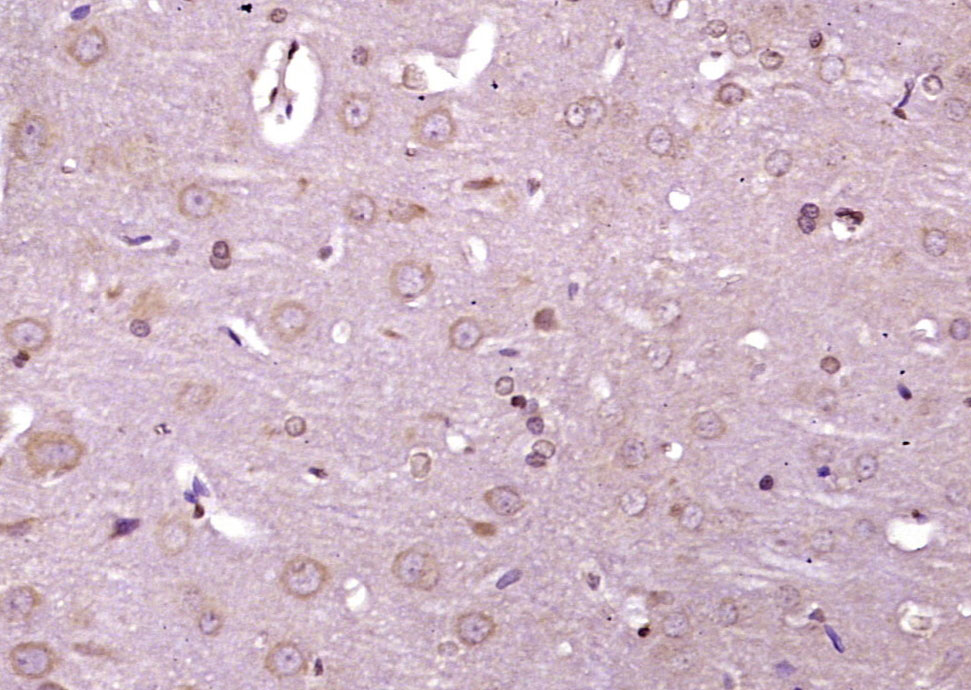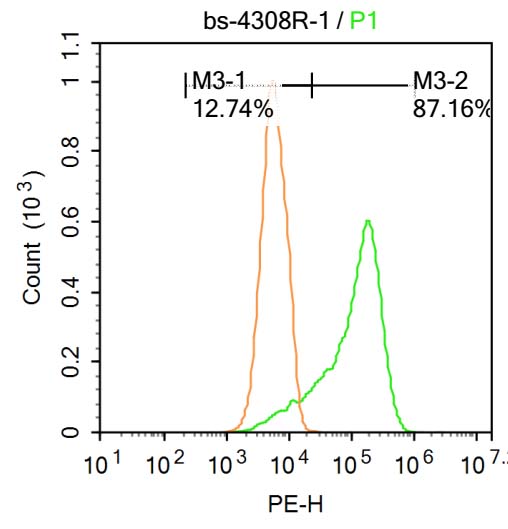
Rabbit Anti-phospho-IRE1a (Ser 726)antibody
p-IRE1a (phospho-Ser 726); IRE1 (phospho S726) ; IRE1 alpha (p-Ser726); Endoplasmic reticulum (ER) to nucleus signalling 1; Endoplasmic reticulum to nucleus signaling 1; Endoplasmic reticulum-to-nucleus signaling 1; Endoribonuclease; ER to nucleus signali
View History [Clear]
Details
Product Name phospho-IRE1a (Ser 726) Chinese Name 磷酸化内质网核Signal transduction蛋白a1抗体 Alias p-IRE1a (phospho-Ser 726); IRE1 (phospho S726) ; IRE1 alpha (p-Ser726); Endoplasmic reticulum (ER) to nucleus signalling 1; Endoplasmic reticulum to nucleus signaling 1; Endoplasmic reticulum-to-nucleus signaling 1; Endoribonuclease; ER to nucleus signaling 1; ERN 1; ERN1; ERN1_HUMAN; hIRE 1p; hIRE1p; Inositol requiring 1; Inositol requiring protein 1; Inositol-requiring protein 1; IRE 1; IRE 1a; IRE 1P; Ire1 alpha; Ire1-alpha; IRE1a; Ire1alpha; IRE1P; MGC163277; Protein kinase/endoribonuclease; Serine/threonine protein kinase/endoribonuclease IRE1.ERN1_HUMAN literatures Product Type Phosphorylated anti Research Area Cell biology Signal transduction Kinases and Phosphatases Immunogen Species Rabbit Clonality Polyclonal React Species Human, Mouse, Rat, (predicted: Dog, Pig, Cow, Horse, Rabbit, ) Applications ELISA=1:5000-10000 IHC-P=1:100-500 IHC-F=1:100-500 Flow-Cyt=1ug/test IF=1:100-500 (Paraffin sections need antigen repair)
not yet tested in other applications.
optimal dilutions/concentrations should be determined by the end user.Theoretical molecular weight 107kDa Cellular localization cytoplasmic The cell membrane Form Liquid Concentration 1mg/ml immunogen KLH conjugated synthesised phosphopeptide derived from human IRE1a around the phosphorylation site of Ser726 : SF(p-S)RR Lsotype IgG Purification affinity purified by Protein A Buffer Solution 0.01M TBS(pH7.4) with 1% BSA, 0.03% Proclin300 and 50% Glycerol. Storage Shipped at 4℃. Store at -20 °C for one year. Avoid repeated freeze/thaw cycles. Attention This product as supplied is intended for research use only, not for use in human, therapeutic or diagnostic applications. PubMed PubMed Product Detail Senses unfolded proteins in the lumen of the endoplasmic reticulum via its N-terminal domain which leads to enzyme auto-activation. The active endoribonuclease domain splices XBP1 mRNA to generate a new C-terminus, converting it into a potent unfolded-protein response transcriptional activator and triggering growth arrest and apoptosis.
Function:
Senses unfolded proteins in the lumen of the endoplasmic reticulum via its N-terminal domain which leads to enzyme auto-activation. The active endoribonuclease domain splices XBP1 mRNA to generate a new C-terminus, converting it into a potent unfolded-protein response transcriptional activator and triggering growth arrest and apoptosis.
Subunit:
Homodimer; disulfide-linked. Dimer formation is driven by hydrophobic interactions within the N-terminal luminal domains and stabilized by disulfide bridges. Also binds HSPA5, a negative regulator of the unfolded protein response. This interaction may disrupt homodimerization and prevent activation of ERN1. Interacts with TAOK3 and TRAF2.
Subcellular Location:
Endoplasmic reticulum membrane; Single-pass type I membrane protein.
Tissue Specificity:
Ubiquitously expressed. High levels observed in pancreatic tissue.
Post-translational modifications:
Autophosphorylated.
Similarity:
Belongs to the protein kinase superfamily. Ser/Thr protein kinase family.
Contains 1 KEN domain.
Contains 1 protein kinase domain.
SWISS:
O75460
Gene ID:
2081
Database links:Entrez Gene: 2081 Human
Entrez Gene: 78943 Mouse
Omim: 604033 Human
SwissProt: O75460 Human
SwissProt: Q9EQY0 Mouse
Unigene: 133982 Human
Unigene: 592041 Human
Unigene: 700027 Human
Unigene: 20452 Mouse
Unigene: 340943 Mouse
Unigene: 226435 Rat
Product Picture
Primary Antibody (green line): Rabbit Anti-phospho-IRE1a (Ser 726) antibody (SL4308R)
Dilution: 1μg /10^6 cells;
Isotype Control Antibody (orange line): Rabbit IgG .
Secondary Antibody : Goat anti-rabbit IgG-PE
Dilution: 1μg /test.
Protocol
The cells were fixed with 4% PFA (10min at room temperature)and then permeabilized with PBST for 20 min at room temperature. The cells were then incubated in 5%BSA to block non-specific protein-protein interactions for 30 min at at room temperature .Cells stained with Primary Antibody for 30 min at room temperature. The secondary antibody used for 40 min at room temperature. Acquisition of 20,000 events was performed.
Bought notes(bought amounts latest0)
No one bought this product
User Comment(Total0User Comment Num)
- No comment




 +86 571 56623320
+86 571 56623320
 +86 18668110335
+86 18668110335

